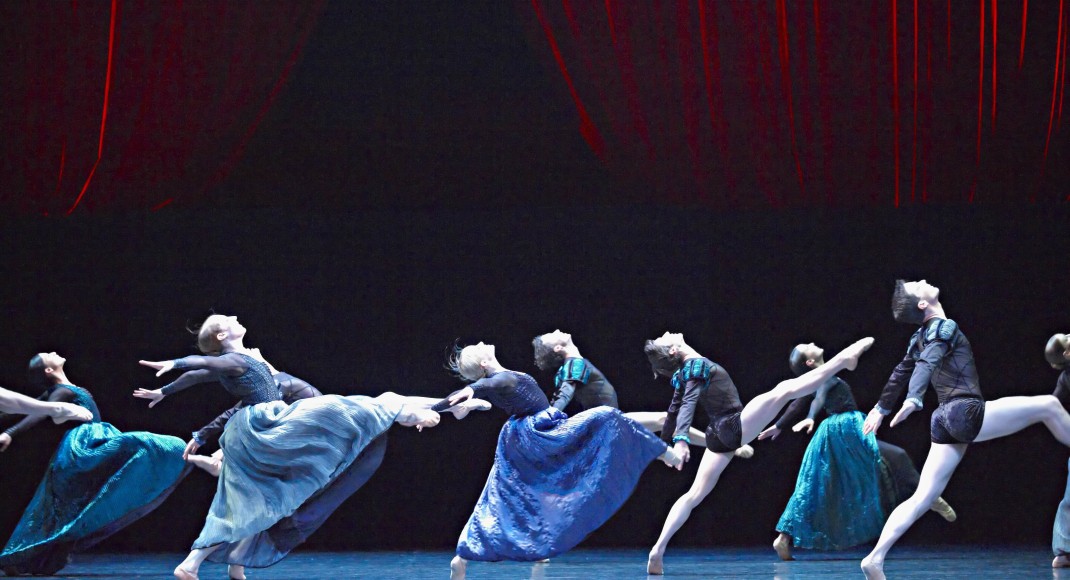The Australian Ballet’s triple bill Concord is currently in its Sydney season. It’s at the Opera House until 30 November.
Wayne McGregor’s Dyad 1929 is as startling as ever, although the cast I saw did not manage to achieve the same degree of technical precision and sense of purpose that made the opening night in Melbourne this past August such a brilliant occasion. Alexei Ratmansky’s Scuola di Ballo remains pantomime for those who like their ballet that way. As for Nacho Duato’s sublime Por vos muero, it continues to give and give of itself in a way that only the very best works of art can do.
Por vos in its Australian Ballet production goes back to the directorship of Ross Stretton who introduced it to Australian audiences in 2000. Who can forget the ravishing Felicia Palanca in the leading female role in that first season? Her passion for her role knew no bounds. But then who can forget Daniel Gaudiello on opening night in Melbourne this year with his capacity to show to advantage the intricacies of Duato’s choreography?
On the second matinee of the Sydney season no dancer really stood out, which allowed the opportunity to think more about the work itself, especially its seamless yet choreographically idiosyncratic duets, its use of humour and its delicious sensuousness. In fact it sent me back to the DVD to look more closely at how Duato had structured the work and at his use of props, especially the masks in his dance for six women and his decorative screens at the back of the stage space and the way they were used by the dancers to link each section.
But in addition I turned on the DVD’s subtitles and saw for the first time an English translation of the narrator’s Spanish words. The work stands brilliantly by itself—no translation of the words is necessary to feel that it is about love and passion in their many manifestations. Duato also explains on the DVD that everyone danced in fifteenth and sixteenth century Spain: dance was not thought of as an art but simply as a way of expressing oneself on pretty much any occasion. Such a desire to dance is also inherent in the choreography without our being told. Both the words of the narrator and Duato’s explanation simply confirm what we know. Por vos is an exceptional work.
But the words of the narrator are deeply affecting. As six dancers, clothed in stripped back skin-coloured costumes, move off and give up the stage for a final solo by the leading female dancer, whose consort appears in the closing moment to enfold her in his arms, we are told:
For thee I was born/Through thee I have life/For thee I must die/And for thee I die.
Por vos is an exceptional work.
Michelle Potter, 23 November 2009
Featured image: Dancers of the Australian Ballet in Por vos muero, 2009. Photo: © Jim McFarlane.


This is indeed an exceptional work. I have always felt that the dancers in the skin-coloured costumes represent those who have gone before us and the costumed dancers are those who are still in the thick of life. It is an immensely affecting work and seeing it again several times this season in Melbourne, shortly after the death of my mother, was at once upsetting and very comforting.
This is a terrific comment. I agree that those in the skin coloured costumes represent those who have gone before us, but perhaps those who will come after as well. But one of the best things about Por vos is that it gives us the space to examine our emotions, whatever they might be.